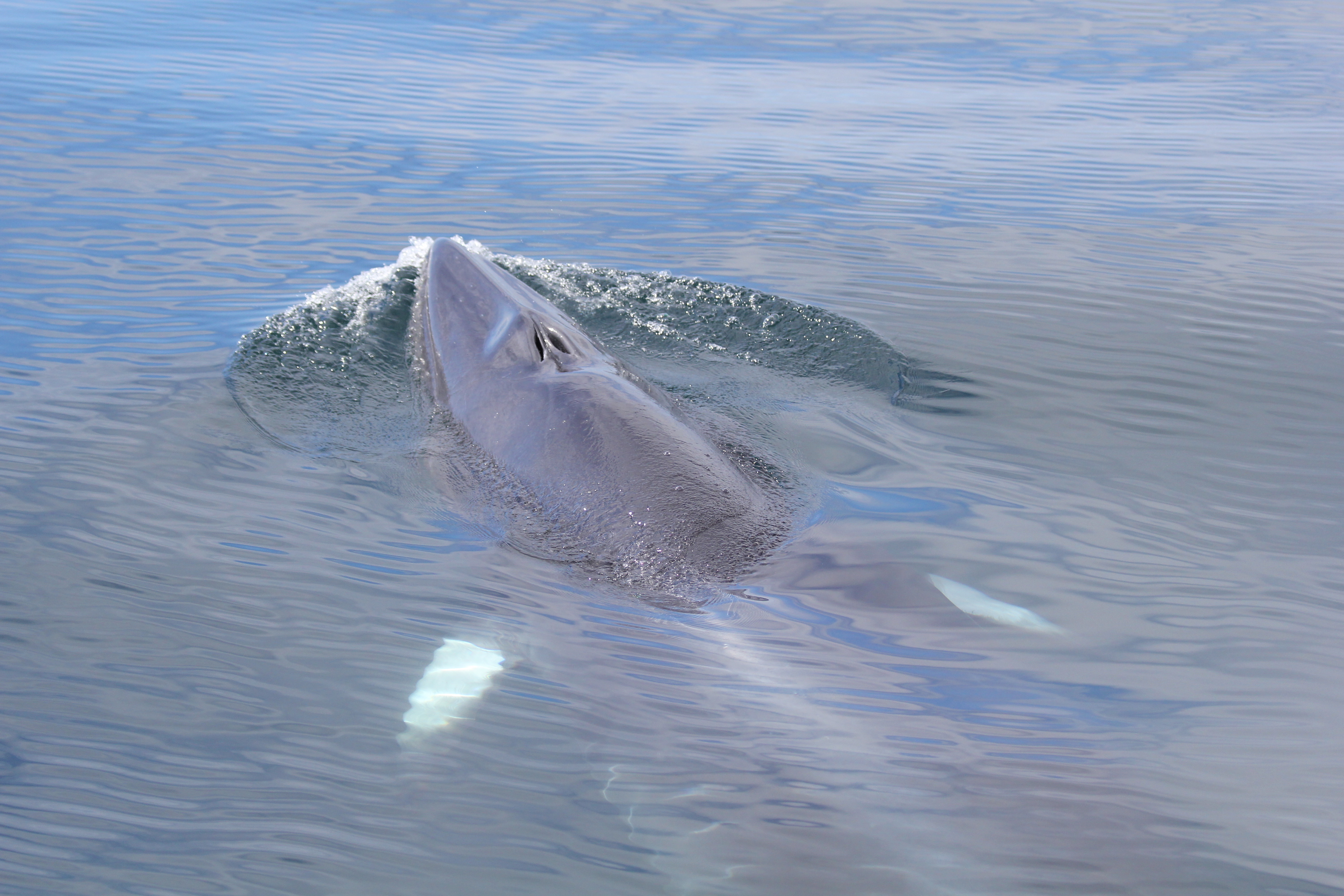
New laser technology is to be used to for “pioneering research” into whales and dolphins living off of Scotland’s west coast.
Scientists will use photogrammetry equipment to help collect vital new information to assess the overall health of the mammals in the Hebrides.
Hebridean Whale and Dolphin Trust announced it would be using the technology, which makes measurements from photographs, for its 2018 survey.
 New technology will help to assess the health of cetaceans (HWDT)
New technology will help to assess the health of cetaceans (HWDT)
Becky Dudley, marine biodiversity officer, said: “This new equipment will help build a greater understanding of individual whales’ movements, behaviour and overall health, and help us evaluate their interactions with man-made items in the marine environment.”
The bespoke equipment made for the conservation charity works by placing two dots of light – of a known distance, typically around 10cm (4in) – onto the body of a cetacean at the same time a photograph is taken.
This will be used to measure the length of the animals – helping to determine numbers of young whales, assess body conditions for parasites such as sea lice, and classify marks and scars from interactions with marine plastic and fishing gear.
Surveys are partly funded by a grant from Scottish Natural Heritage and are carried out by volunteers and marine scientists.
They document the health of whales, dolphins and porpoises from the charity’s specialised research yacht Silurian, with the project ongoing for the last 15 years.
Fiona Manson, a marine specialist at Scottish Natural Heritage, said: “The data collected by Hebridean Whale and Dolphin Trust over the years has helped us understand more about our marine wildlife and how to look after it, and this is an invaluable way to better connect people to nature in their local area.”
The surveys will run from April 15 to the end of October, with departures from Tobermory on the Isle of Mull, Kyle of Lochalsh near Skye, and Ullapool.
For more details, visit http://hwdt.org/silurian.


Why are you making commenting on The Herald only available to subscribers?
It should have been a safe space for informed debate, somewhere for readers to discuss issues around the biggest stories of the day, but all too often the below the line comments on most websites have become bogged down by off-topic discussions and abuse.
heraldscotland.com is tackling this problem by allowing only subscribers to comment.
We are doing this to improve the experience for our loyal readers and we believe it will reduce the ability of trolls and troublemakers, who occasionally find their way onto our site, to abuse our journalists and readers. We also hope it will help the comments section fulfil its promise as a part of Scotland's conversation with itself.
We are lucky at The Herald. We are read by an informed, educated readership who can add their knowledge and insights to our stories.
That is invaluable.
We are making the subscriber-only change to support our valued readers, who tell us they don't want the site cluttered up with irrelevant comments, untruths and abuse.
In the past, the journalist’s job was to collect and distribute information to the audience. Technology means that readers can shape a discussion. We look forward to hearing from you on heraldscotland.com
Comments & Moderation
Readers’ comments: You are personally liable for the content of any comments you upload to this website, so please act responsibly. We do not pre-moderate or monitor readers’ comments appearing on our websites, but we do post-moderate in response to complaints we receive or otherwise when a potential problem comes to our attention. You can make a complaint by using the ‘report this post’ link . We may then apply our discretion under the user terms to amend or delete comments.
Post moderation is undertaken full-time 9am-6pm on weekdays, and on a part-time basis outwith those hours.
Read the rules here